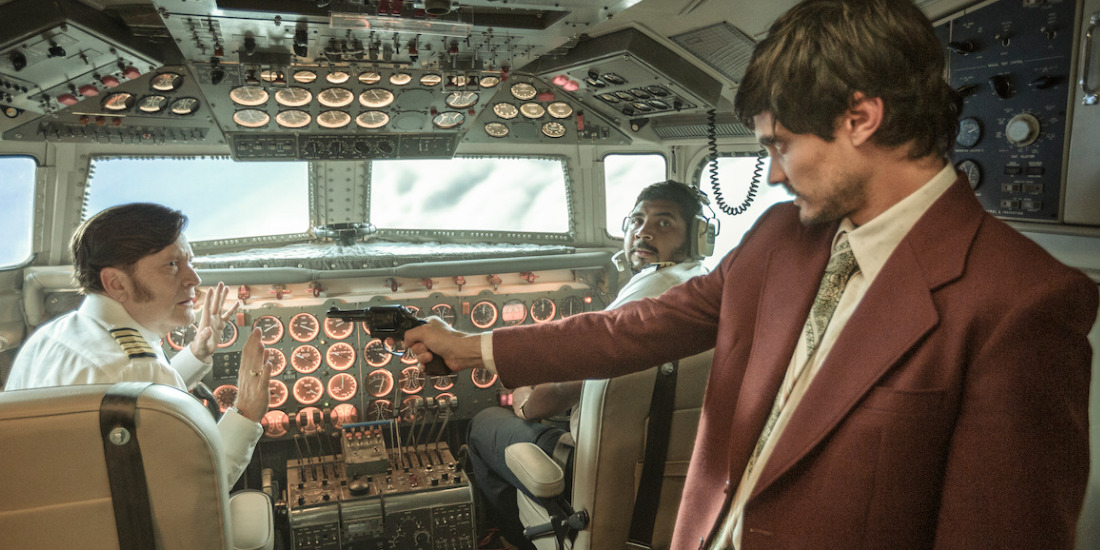“Ulises” Borja and “El Toro” Solano occupy the antagonistic perspective in ‘The Hijacking of Flight 601,’ the Netflix Spanish show that fictionalizes the real-life 1973 hijacking of SAM Colombia Flight HK-1274. Within the show’s narrative, Borja and Toro’s morally nuanced characters take over a commercial aircraft, holding numerous passengers and crew members captive in an armed hostage situation. With claims of belonging to the Revolutionary People’s Front organization, the duo makes financial and political demands, spreading widespread pain and panic.
Given the real-life context of Eusebio Borja and Francisco Solano López— the hijackers aboard Flight HK-1274— Borja and Toro’s on-screen characters become shrouded with a level of realism. However, does this same realism extend to the political organization, Revolutionary People’s Front?
Borja, López, and the National Liberation Army
The Revolutionary People’s Front, featured in ‘The Hijacking of Flight 601,’ is not a real organization but rather a stand-in element for the real-life insurgency group National Liberation Army. Although the Revolutionary People’s Front is an actual political group with Marxist–Leninist ideals of communism, the party has no relevance to Columbia. Therefore, despite their shared name, the real-life RPF has nothing to do with the one mentioned in the show. Instead, the latter has a more tangible connection to the National Liberation Army.

In the show, Borja and Toro claim to be members of the revolution who are willing to kill and die for their cause. Therefore, they attempt to ransom political prisoners’ freedom and two hundred thousand dollars from the Columbian government/Aerobolivar Airlines in the name of the Latin-American revolution. However, once it becomes blithely obvious that the government has no interest in negotiating with terrorists, it doesn’t take long for the duo to drop the prison release demands.
As such, the truth comes out that Borja and Toro were simply utilizing the revolution’s name as a charade when they were really only after the money. In real life, the actual hijackers— Eusebio Borja and Francisco Solano López— employed a similar tactic. Upon their initial takeover of Flight HK-1274, the duo claimed to belong to the National Liberation Army. The NLA, also known as the Ejército de Liberación Nacional, ELN, in Spanish, is another Marxist–Leninist group that has been a far-left political party embroiled in the Columbian Conflict since 1964. Nevertheless, much like in the show, Borja and López’s claims turned out to be a ruse revealed for its inauthenticity upon López’s arrest.
López, a Paraguayan man, confessed his and his partner’s motives behind the hijacking were purely monetary-driven. The same had been public speculation for some time by then, especially since the hostages noted the lack of their hijackers’ Columbian accent. As it would turn out, Borja and López had forged a false authority, carrying fake bombs and guns. Thus, their affiliation to the revolution was another part of their costume to help them hijack a plane. In reality, the National Liberation Army had no connections to the hijacker duo. Consequently, it remains evident that the Revolutionary People’s Front, featured in the show, is a counterpart of the Columbian National Liberation Army.
Read More: Richard Wilches and Guillermo Luís Lequerica: What Happened to the Real Pilots?


You must be logged in to post a comment.